Oyazawa-bashi Bridge
In the previous issue, I wrote about the Showa-bashi Bridge designed by Takeshi Nakajima.
I would like to check out other bridges he designed, and today I came to see the Oyazawa-bashi Bridge in Otari Village.
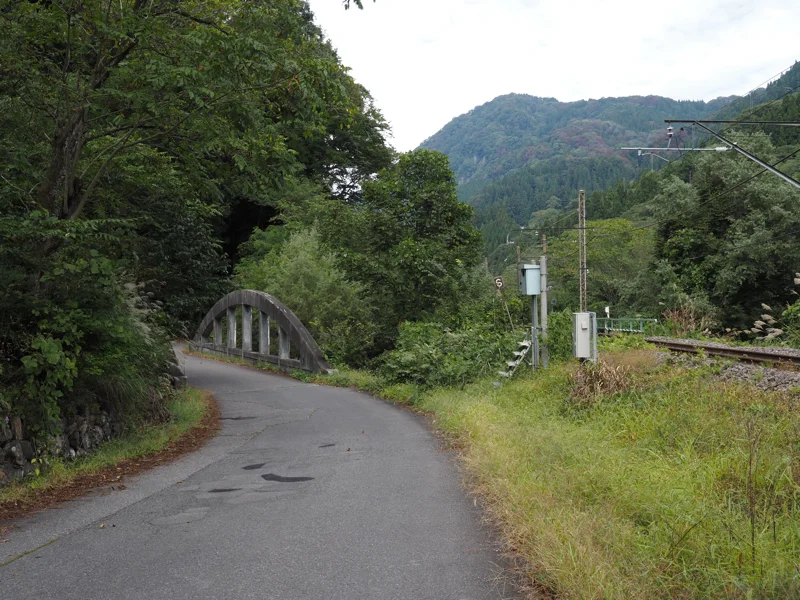
This bridge can be seen as we go down the current Route 148 onto the old route 148.
The bridge is slightly curved instead of being straight with the road, probably to shorten the length of the bridge as much as possible, which gives it an old-fashioned feel and taste.
Oyazawa-bashi Bridge was built in 1937. It was named Oyazawa-bashi because it spans the Oyazawa River, which flows into the Himekawa River.
It is located on the old National Route 148, but at the time of construction, it had not yet become a national highway and was called Prefectural Route 27 Itoigawa-Matsumoto Line. The Oito Line of the tailroad runs parallel to the road, the railroad only opened in 1935.
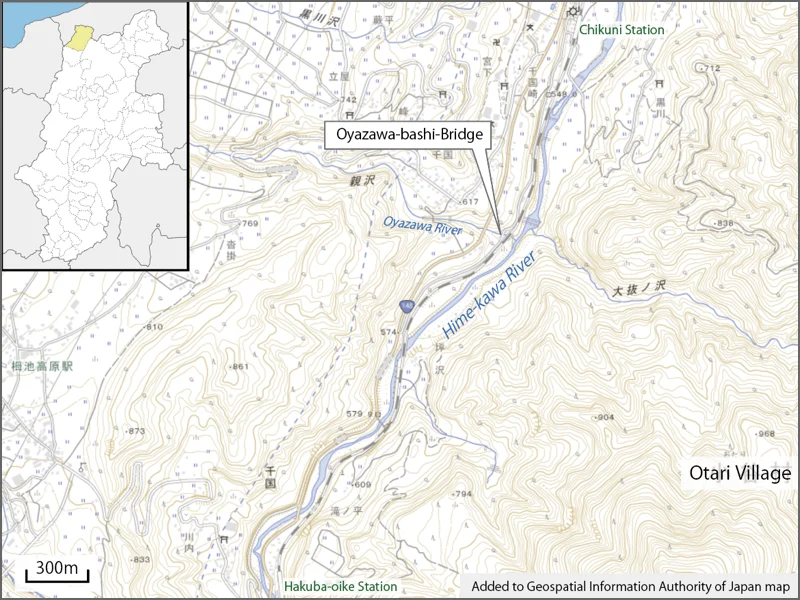
So let’s cross the bridge right away. The bridge is 28.8 meters long and 5.5 meters wide.
The white sign beyond the bridge is a warning about the discharge of the dam and has nothing to do with the bridge.
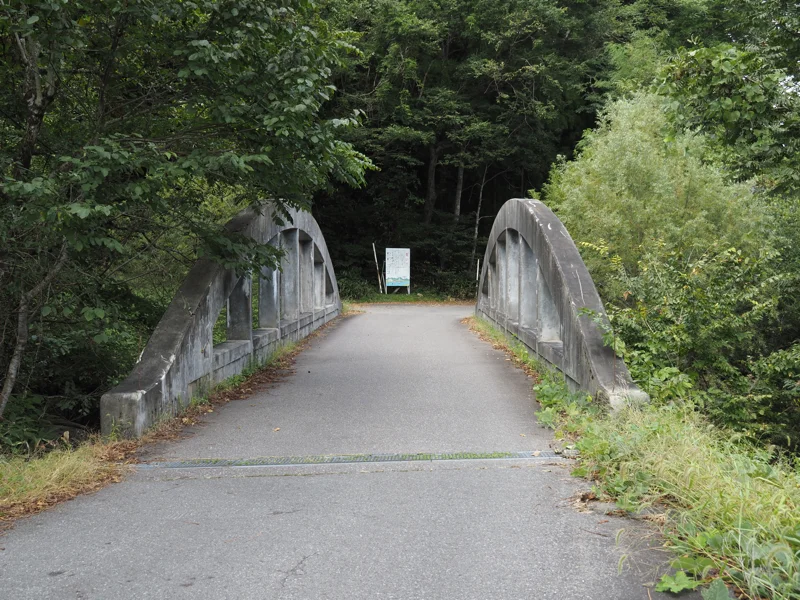
The north side of the bridge.
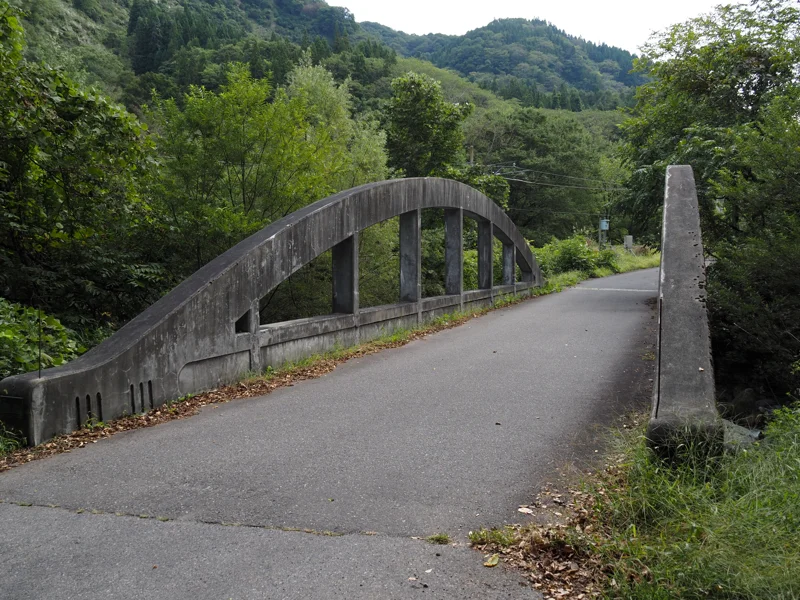
I like the three-line pattern on the edge.
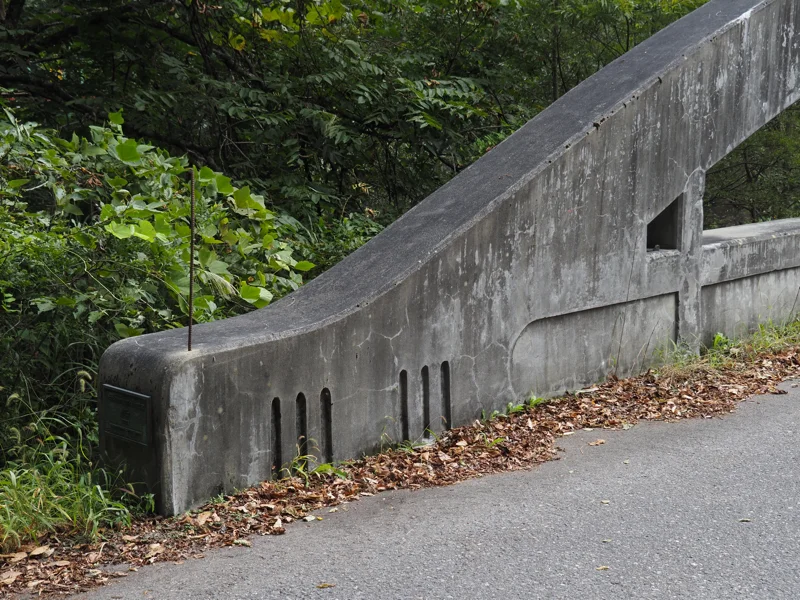
After the bridge was selected as a Civil Engineering Heritage site in 2002, Otari Village budgeted for repair work and the work was carried out in 2004. In fact, before the repair work, the pattern of the three lines had been painted over with mortar and was not visible. It seems that it had been painted over during the renovation work done in the past…even though it is an important decorative point.
It turned out that the pattern was there during the renovation work, and it was fortunately reproduced.
The ICR method (Integrated Concrete Repairing) was used for the repair work. It is said that the deteriorated concrete is scraped off, a catalyst is applied and filled in, and a chemical reaction crystallizes the cement.
(A quick search also shows ICR method or ICR treatment as a method for metal fatigue. I wonder if there is another type of construction method with the same name).
The “Civil Engineering Heritage” plaque is attached to the lower left side of the bridge.
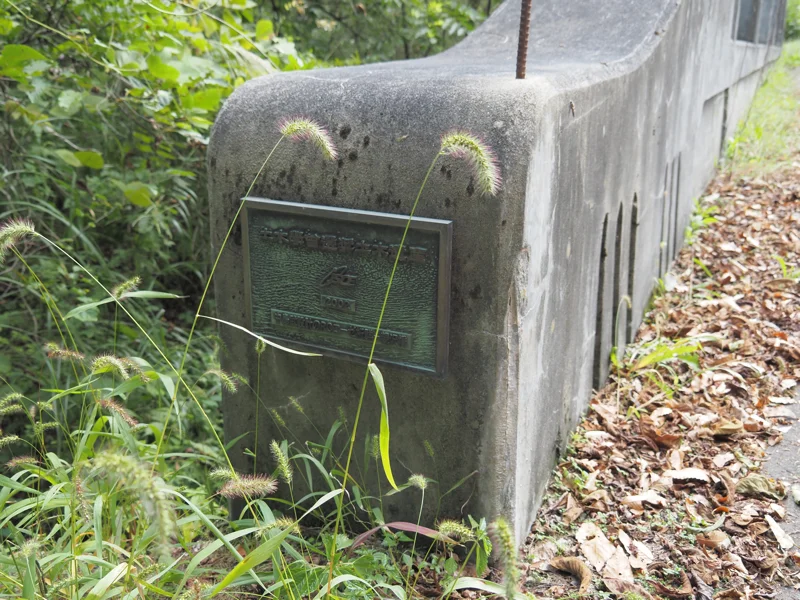
While looking at the Google Maps photo, I noticed that in the photo taken in 2004, a wooden explanatory board was erected next to the bridge, as shown by the dotted line. (The date on the interpretive board is 2003.)
It probably did not last long due to snow accumulation.
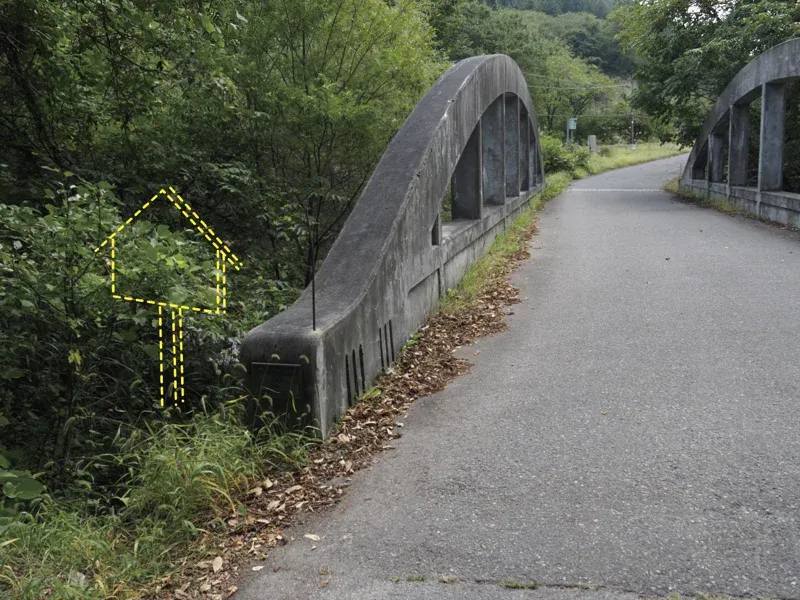
Another thing I noticed is that the 2004 photo does not show the rebar standing on the edge. The rebar is visible in each of the three photos above.
If they were not present during the repair work, when and for what purpose were these rebars installed? The rebar was at the four corners of the bridge.
Moving to the bank next to the bridge, I took this photo. This is the west side of the bridge.
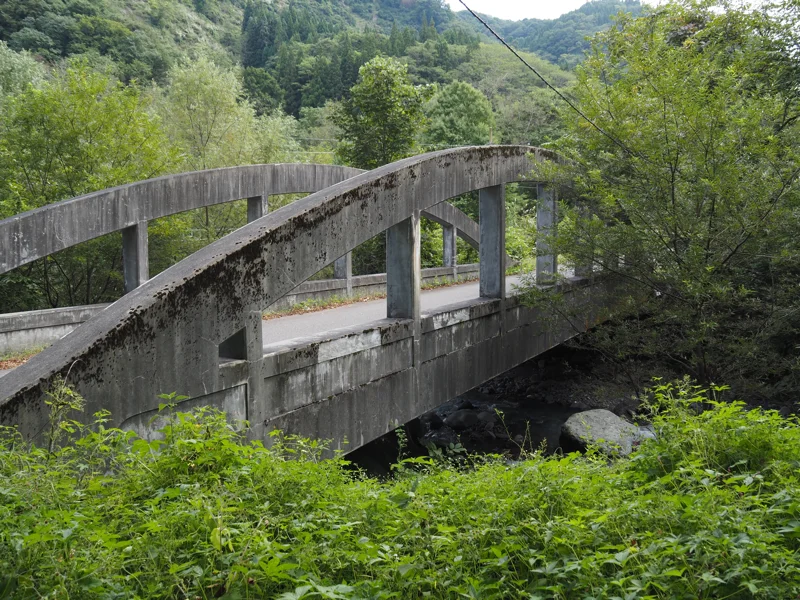
I went down to the riverbank.
Oyazawa-bashi Bridge can be seen behind the railroad bridge.
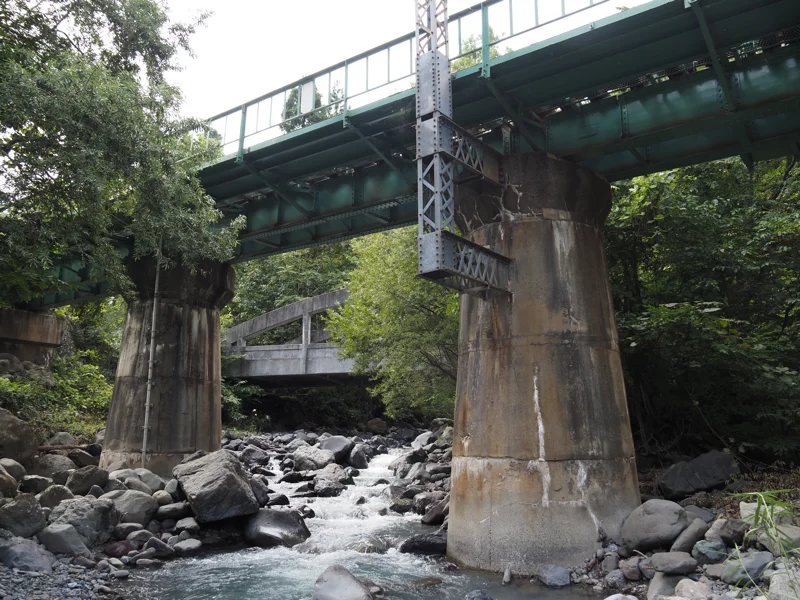
I moved closer to the Oyazawa-bashi Bridge. The underside of the bridge looks like this.
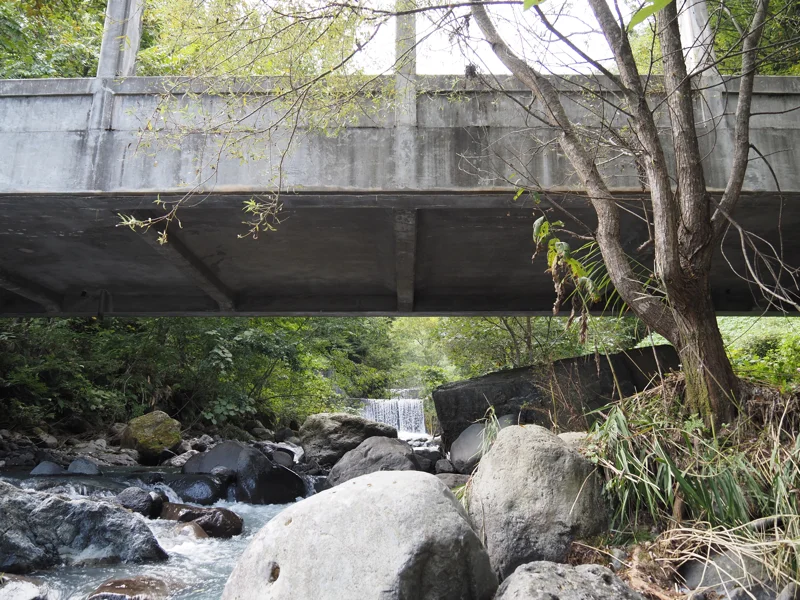
Well, let’s go to the next bridge.
There is another bridge in Otari Village, the Himekawa-bashi Bridge designed by Takeshi Nakajima.
But it was under construction and closed to traffic.
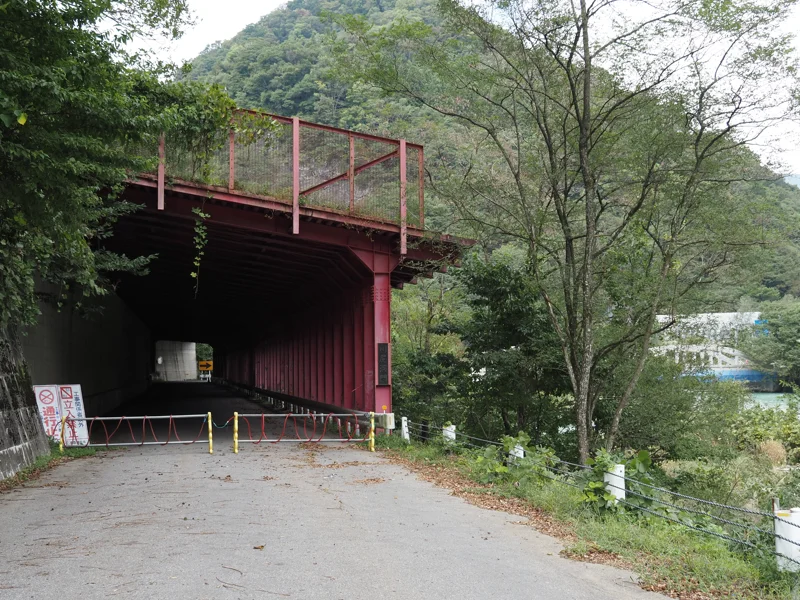
The Himekawa-bashi Bridge will be closed from September 17 to December 20, 2024 (scheduled) for maintenance.
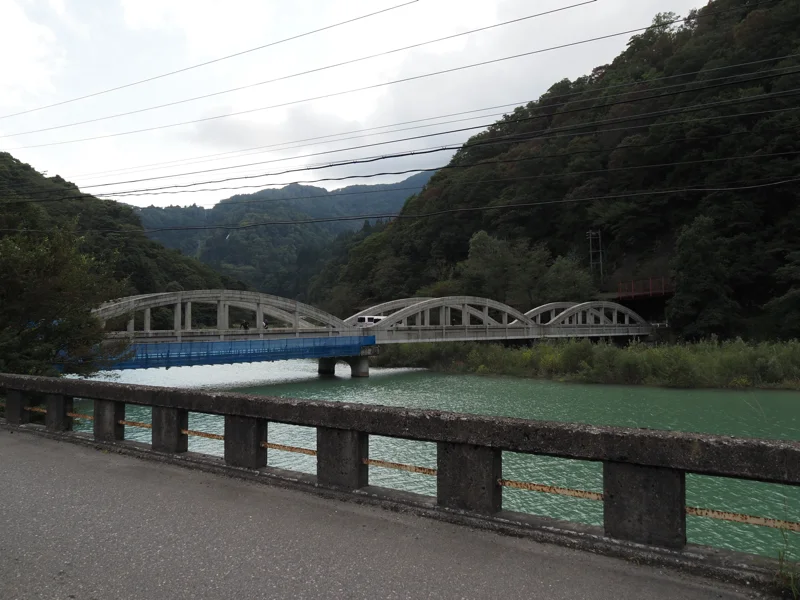
The last photo was taken from the other side of the bridge. It can’t be helped during construction, so I will visit again sometime.
[Reference]
“Restoring work for Oyazawa-bashi, a reinforced concrete Lohse bridge built in 1937" Hitoshi Ochiai & Junichi Konishi / Collection of lectures on civil engineering history vol.25 / 2005)
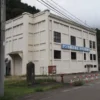
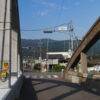
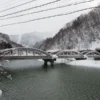
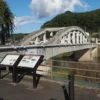
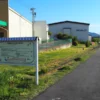
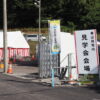
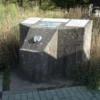
Discussion
New Comments
No comments yet. Be the first one!